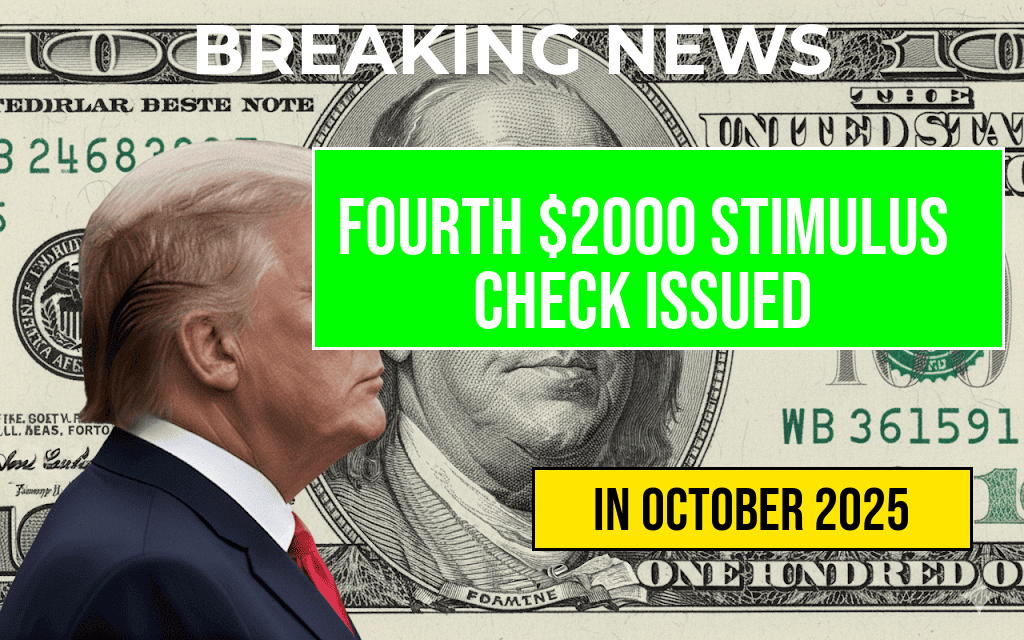The federal government has commenced the distribution of the fourth stimulus check valued at $2,000, providing additional financial relief to eligible Americans amidst ongoing economic challenges. The payments, which began rolling out earlier this week, are part of a broader initiative aimed at supporting citizens facing inflationary pressures and rising living costs. While many recipients have already received their deposits, others are still awaiting confirmation of eligibility and deposit dates. This new wave of stimulus payments underscores the ongoing federal efforts to bolster household finances and stimulate economic activity.
Who is eligible for the $2,000 stimulus check?
Eligibility criteria overview
The $2,000 stimulus checks are primarily targeted at individuals and families meeting specific income and demographic criteria. Eligibility depends on factors such as income level, filing status, and previous participation in federal assistance programs. Here are the key eligibility points:
- Income thresholds: The payments are generally available to households earning up to $75,000 annually for individuals, or $150,000 for joint filers.
- Filing status: Eligible recipients typically include those who filed taxes as single, married filing jointly, or head of household during the previous tax year.
- Residency requirements: Applicants must be U.S. residents or citizens currently residing within the country.
- Previous stimulus participation: Some distributions are based on prior receipt of stimulus payments or benefits from assistance programs such as SNAP or unemployment insurance.
Additional considerations
Individuals who did not qualify for earlier stimulus rounds due to income or filing status might still be eligible if they meet the specified criteria. Moreover, certain eligible recipients who did not receive their previous payments due to processing issues can often claim missed funds through the IRS recovery portal.
Deposit dates and how payments are issued
Schedule and method of distribution
The federal government has adopted a phased approach to issuing the $2,000 stimulus payments. Recipients should monitor their bank accounts and official IRS notices for updates. The payments are primarily being issued via direct deposit, with paper checks and prepaid debit cards as alternative options for those without banking information on file.
| Week of | Distribution Phase | Intended Recipients |
|---|---|---|
| October 15–21, 2023 | Early recipients based on prior filings | Individuals with direct deposit info on file |
| October 22–28, 2023 | Remaining direct deposit recipients | Eligible households registered with IRS |
| November 2023 | Paper checks and debit cards | Recipients without bank info or opting for mail |
How to verify your eligibility and track payment status
Using IRS tools and resources
Taxpayers can confirm their eligibility and monitor payment progress through the IRS Get My Payment tool. This online platform provides real-time updates on the status of stimulus deposits, including estimated deposit dates and payment methods. To use the tool, individuals need their Social Security number or ITIN, filing status, and the exact amount of their last tax refund or stimulus payment.
What to do if you haven’t received your payment
- Check the IRS status tracker for updates.
- Ensure your banking information is accurate and current.
- If eligible and no payment has been received after the scheduled date, contact the IRS or consult a tax professional for assistance.
Additional notes on the stimulus initiative
The federal stimulus program aims to provide targeted financial support to mitigate the effects of economic downturns. While the initial rounds focused on broader populations, recent distributions have become more targeted, emphasizing those most in need. The ongoing payments are part of legislative efforts to sustain consumer spending and stabilize the economy. For more information on stimulus policies and updates, the U.S. Congress website remains a vital resource.
Frequently Asked Questions
What is the purpose of the fourth stimulus check of $2,000?
The fourth stimulus check provides additional financial support to eligible individuals to help cover expenses during ongoing economic challenges.
Who is eligible to receive the $2,000 stimulus payment?
Eligible recipients typically include qualified individuals who meet specific income and filing requirements. Details vary by state and program, so it’s important to check the criteria for your area.
When will the $2,000 payments be deposited into recipients’ accounts?
The deposit dates for the stimulus checks are scheduled according to state and distribution timelines. Many payments are being issued now, with specific dates available through official channels.
How can I find out if I am eligible for the fourth stimulus check?
You can determine your eligibility by reviewing the official guidelines provided by your state or local government. Many agencies offer online tools to verify qualification.
What should I do if I haven’t received my $2,000 stimulus payment yet?
If you haven’t received your payment, check the status through official payment portals or communications. If issues persist, contact support services or local authorities for assistance.

Leave a Reply